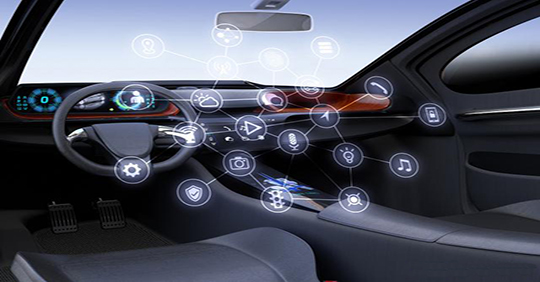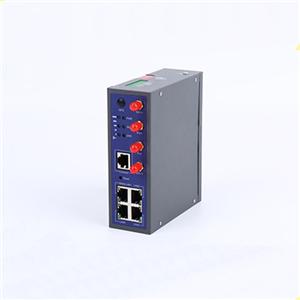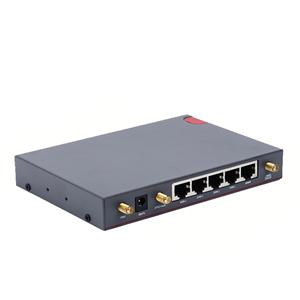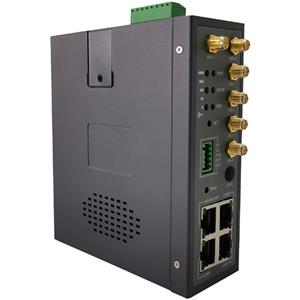Key signals revealed in sensor field
Key signals revealed in sensor field

In recent years, the global sensor market has maintained rapid growth. As the economic environment continues to improve, the market demand for sensors will continue to increase.
It is estimated that by 2023, the overall sensor market will exceed 100 billion U.S. dollars, the largest of which will be in the RF and CIS fields, with a scale of 22.5 billion and 21.5 billion U.S. dollars. Car networking applications.
Sensors are the foundation and an important part of the Industrial Internet of Things. According to the IoT technology roadmap, the IoT industry chain includes a perception layer, a transmission layer, a data processing layer, and an application service layer. Among them, the sensor as the sensing layer is the core foundation of the IoT industry chain.
In the operation of the Internet of Things, the sensor converts the physical, chemical, and biological information obtained by perception into easily identifiable digital information and transmits it to the back-end platform for processing, analysis, and application.
The growth wave of sensors is mainly divided into three waves:
The first wave is automotive electronics, which only provides the initial level of acceleration detection and pressure detection.
The second wave is consumer electronics represented by smart phones, which need to detect multiple physical quantities such as light, sound, and vibration. In addition, due to the increase in the integration of electronic equipment, the volume of sensors has also been significantly reduced;
The third wave is a new wave of sensor demand caused by the development of the Internet of Things. Entering the era of the Internet of Everything, the number of Internet of Things product access is expected to increase by orders of magnitude. The development of the field of low-power MEMS sensors has increased the technical requirements accordingly.
The automotive sensor industry chain can be roughly divided into three parts: upstream raw materials, midstream production, and downstream applications. China has advantages in midstream production:
1) The upstream raw materials are mainly chips and electronic materials such as resistors, plastics and pastes. Upstream chips have high technical requirements and high industry concentration. They are mainly monopolized by foreign manufacturers such as Infineon, NXP, and STMicroelectronics. Domestic companies are facing higher barriers to entry.
The upstream electronic materials have high requirements for testing and testing equipment and manufacturing processes. The domestic mainland electronic material products are mostly in the low-end field. The high-end market is basically monopolized by manufacturers in Europe, America, Japan, South Korea, and Taiwan, such as DuPont, Dow Chemistry, Merck Group, Mitsubishi Chemical, etc.
2) Midstream manufacturers carry out sensor production. Domestic manufacturers in the midstream segment have great growth opportunities based on cost advantages and the customer base advantages of independent car companies. Major domestic manufacturers such as Huagong Technology, Baolong Technology and Dongfeng Technology have good relations of cooperation with BYD, Dongfeng Nissan, FAW and other OEMs.
3) The downstream market applies sensors to OEMs and 4S stores.
MEMS sensors are an important part of traditional automotive electronic systems and are widely used in electronic body stabilization programs (ESP), anti-lock braking (ABS), electronically controlled suspension (ECS), tire pressure monitoring (TPMS) and other systems. Among them, pressure sensors, accelerometers, gyroscopes and flow sensors are the most used MEMS sensors in automobiles, with a total share of 99% of automotive MEMS systems.
From the perspective of the industrial chain, large foreign manufacturers occupy a monopoly position, with high concentration, wide product lines, leading technology, and many customers, thus forming barriers of scale. The leading players in the market are still European, American, and Japanese manufacturers. Internationally renowned manufacturers such as Broadcom, Bosch, and STMicroelectronics rank in the top three. In China, due to cost advantages and advantages of independent brand customer groups, China has strong competition in midstream sensor production force.
Each car currently contains an average of 24 MEMS sensors, while in high-end cars, approximately 25-40 MEMS sensors are used. The value of commonly used MEMS sensor after-installed bicycles ranges from 2,000 to 20,000 yuan; joint venture vehicles are usually not less than 4,000 yuan, while independent brands only cost about 2,000 yuan, and high-end models are about 10,000 to 20,000 yuan.
It is therefore expected that with the implementation of the National Sixth Standard on the improvement of emission detection requirements and the impact of the trend of "smart electrification" of automobiles, China's MEMS sensor market will continue to grow steadily in the near future. The overall automotive sensor market will reach 61.5 billion US dollars by 2025 (18% CAGR). , The future growth space is broad.
Some domestic MEMS sensor manufacturers include: GoerTek, Aerospace Electronics, Dunan Environment, Huatian Technology, Dongfeng Technology, Silan Micro, Suzhou Gujing, Naiwei Technology, Jingfang Technology, etc.
Judging from the current industry trend of automotive intelligent sensors, the technologies and applications of MEMS sensors and ultrasonic radars have been relatively mature, and cameras, millimeter-wave radars, and lidars are embracing active technological innovation with the vigorous development of autonomous driving technologies. Will be the main direction for future development.
Some auto parts companies with strong comprehensive strength at home and abroad carry out multi-product layout on self-driving car sensors, which can provide comprehensive automated driving solutions for downstream customers and form strong competitiveness.
Google Waymo (L5 level), the highest level of autonomous driving, is equipped with sensors such as cameras, millimeter-wave radar, lidar, and audio detection systems.
According to GM Cruise2018 Safety Report, GM unmanned vehicles (L4 level +) use 5 lidars, 21 millimeter-wave radars, and 16 cameras. The camera is used to monitor pedestrians, traffic lights, etc. The top lidar is used to monitor static and dynamic objects, the remote millimeter wave radar is used to detect vehicles and measure speed, the short-range radar is used to monitor surrounding objects, and the high-resolution radar is used to monitor long distances. Moving vehicle.
Camera: Foreign companies Panasonic, Valeo, Fujitsu Ten, and Mainland China occupy a large share. The domestic competition pattern is that both traditional camera companies and component companies are deployed. In the upstream of the automotive camera industry chain, COMS sensors have high technology content and the market is highly concentrated; camera visual recognition: Mobileye is the leader.
Millimeter-wave radar: Standard for high-level autonomous driving, led by foreign component companies, and domestic enterprises gradually mass-produce.
The global millimeter-wave radar market is highly concentrated, with a CR5 of 68% in 2018, which is basically monopolized by foreign oligarchs. The top five suppliers are Bosch, Continental, Hella, Fujitsu Ten, Denso, with a combined market share of approximately 68%.
With the breakthrough of domestic R & D in recent years, the millimeter wave radar has stabilized the supply chain, and a number of emerging challengers have emerged, such as Baolong Technology and Desaixiwei.
Domestic production at 24GHz has been achieved, and only a small number of companies at 77GHz have achieved mass production, such as Wuhu Senstech and Huayu Automotive. Due to the late start of the millimeter-wave radar market, the industry chain is not yet mature, and the development cycle is long, so domestic OEMs mostly choose to import test equipment, production equipment and finished products from abroad, and the industrialization process still needs to be broken through.
Lidar: Due to its high-precision, real-time 3D environment modeling characteristics, it will become the most critical sensor in the L3-L5 stage.
Component companies compete with startups. A number of companies have competed internationally, including Velodyne, Quanergy, Ibeo and other companies, and traditional auto parts leaders such as Bosch and Continental have been deployed. In the field of lidar, there are also many startups in China, most of which have obtained financing to enter the field. However, due to the high cost and not yet commercialization, it is difficult to usher in an explosion in the short term.
China has a late start in the development of lidar, and its accumulation is still shallow. It is mainly for start-ups, such as Sagitar Juhe, Hesai Technology, Beike Tianhui, Beixing Photon, etc. Most manufacturers have successfully developed 32 lines and 64 lines , Even 128-line lidar, but the current lidar products that can be mass-produced and applied to autonomous vehicles are still based on 16-line and 32-line. There is still a significant gap between domestic and foreign lidar manufacturers that started late.
Ultrasonic radars are mainly used in parking sensors and short-range obstacle monitoring in automatic parking systems.
The reversing radar has been sunk from high-end models to low-end models, with a high penetration rate and a front loading rate of about 80%. The parking radar system usually requires 4 UPA ultrasonic radars, while the automatic parking system requires 6-12 ultrasonic radars. The typical configuration is 8 UPA + 4 APAs. The popularity of automatic parking systems will inject new impetus into the growth of ultrasonic radars.
In recent years, with the rapid development of the Internet and the Internet of Things, the application of sensors in emerging smart homes, wearable devices, smart mobile terminals and other fields has grown rapidly, greatly expanding the application space. With reference to national support for integrated circuits, it is likely that a sensor support policy will be introduced in the future. The three major factors of market, technology and policy will drive the rapid development of the sensor industry.
As an autonomous input device for smart equipment to sense external environment information, sensors play a technical traction and scene upgrade role in the application of smart equipment. Intelligent connected cars will subvert the traditional automobile industry, and cars may enter the era of travel operations from traditional vehicle sales and after-sales. In the gradual rise of intelligent connected cars, as policies continue to increase, hardware such as sensors, chips, communication facilities, and databases will take the lead.




